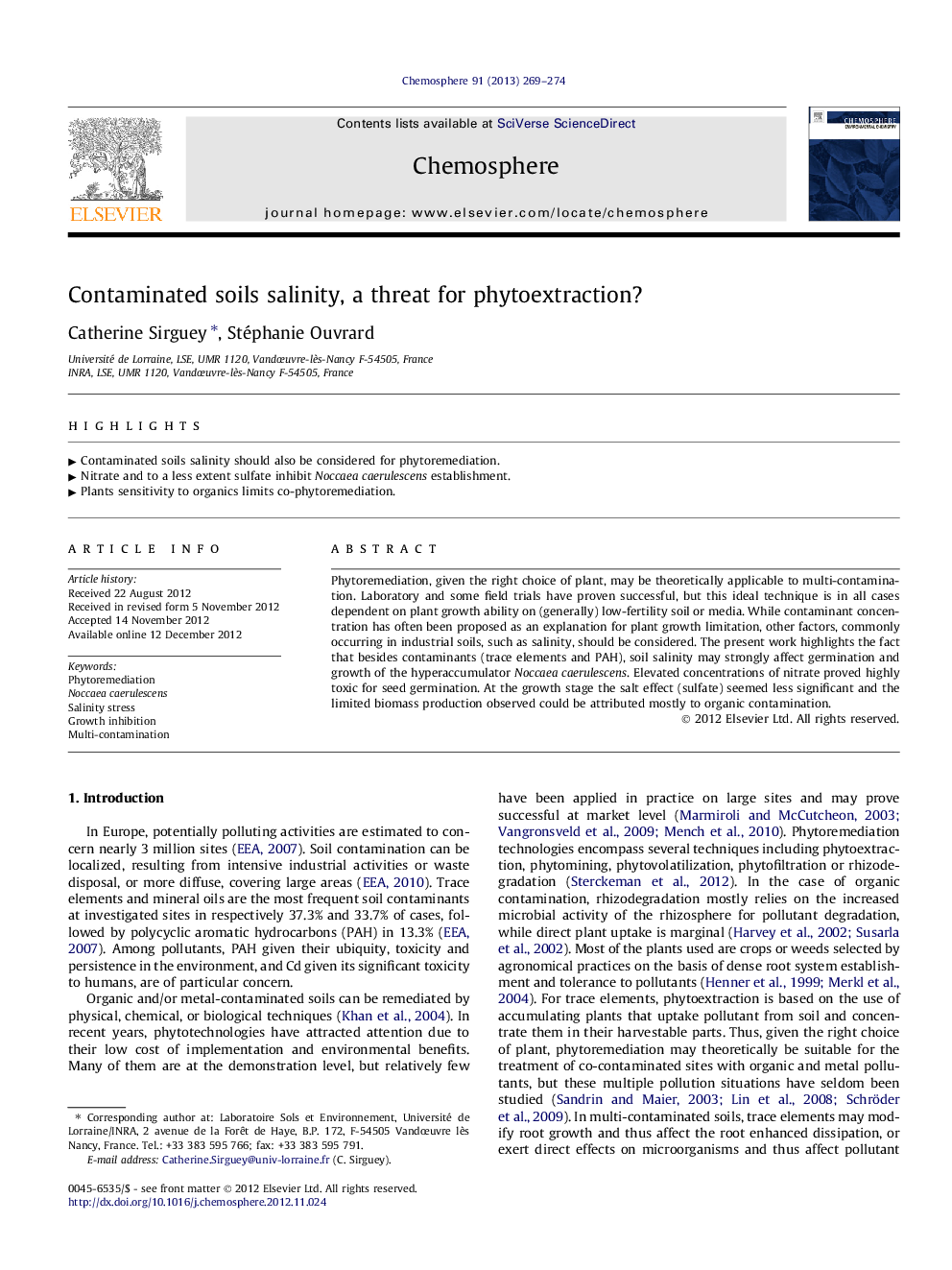| Article ID | Journal | Published Year | Pages | File Type |
|---|---|---|---|---|
| 4409496 | Chemosphere | 2013 | 6 Pages |
Phytoremediation, given the right choice of plant, may be theoretically applicable to multi-contamination. Laboratory and some field trials have proven successful, but this ideal technique is in all cases dependent on plant growth ability on (generally) low-fertility soil or media. While contaminant concentration has often been proposed as an explanation for plant growth limitation, other factors, commonly occurring in industrial soils, such as salinity, should be considered. The present work highlights the fact that besides contaminants (trace elements and PAH), soil salinity may strongly affect germination and growth of the hyperaccumulator Noccaea caerulescens. Elevated concentrations of nitrate proved highly toxic for seed germination. At the growth stage the salt effect (sulfate) seemed less significant and the limited biomass production observed could be attributed mostly to organic contamination.
► Contaminated soils salinity should also be considered for phytoremediation. ► Nitrate and to a less extent sulfate inhibit Noccaea caerulescens establishment. ► Plants sensitivity to organics limits co-phytoremediation.
